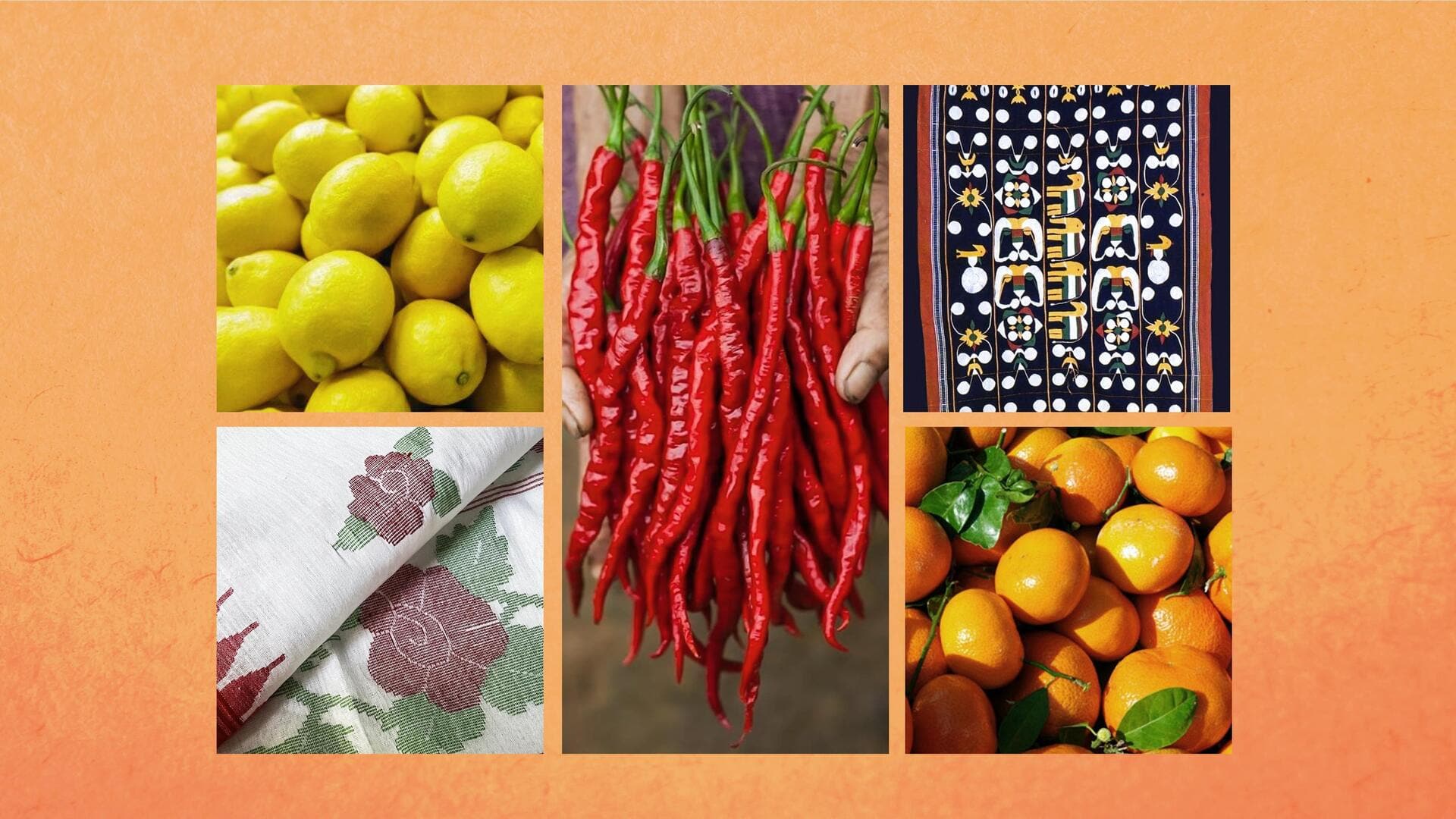
Buy these GI-tagged products from Manipur
What's the story
Manipur, a gem in Northeast India, boasts numerous treasures, especially its local items that several tourists from around the world can take home as souvenirs. Among these items are some products that have earned the reputed Geographical Indication (GI) tag that offers them a status of authenticity, quality, and uniqueness. Today, let us take a look at five of them.
#1
Hathei or Sirarakhong chili
Hathei chilies, which are also called Sirarakhong chilies, are grown in the Sirarakhong village of Manipur. Packed with vitamin C and calcium, these chilies are highly regarded for their aroma, flavor, and health benefits. Another fascinating aspect is their color, which is achieved after thoroughly swirling them after they are sun-dried or cured in a furnace. Locals celebrate Hathei Phanit (a chili festival) annually.
#2
Tamenglong orange
This GI-tagged orange from Manipur is grown in the Tamenglong region of the state. It has balanced a sweet and sour flavor and is loaded with vitamins A, B, and C. What makes it unique is the organic method followed to grow it. It can be used to make jams, squashes, and jellies. Its peel is used to make essential oils.
#3
Shaphee Lanphee
A traditional textile fabric, Shaphee Lanphee was once used as a reward/a token of honor that the kings of Manipur used to give to their bravest soldiers. They feature 10 motifs including shamu (elephant), shagol (horse), iroichi (buffalo horn), nga (fish), numit (sun), tha (moon), thawanmichak (star), phantup (seat), ta(spear), and wahong (peacock) Today, they are used to make waistcoats with synthetic linings.
#4
Kachai lemon
Locally called Kachai champra, this kind of lemon hails from Kachai village in Manipur. What sets it apart from other lemons around the world is the fact that it has the highest quantity of ascorbic acid. One can eat it raw or make juices and pickles. On the health front, this offering is loaded with folic acid, dietary fiber, and a host of vitamins.
#5
Moirang Phee
This textile product features a specific design called MoirangPheejin. The cloth is woven sequentially on both longitudinal edges and then cotton and silk threads are used in the central part of the fabric. It was traditionally made by the local people as a token of tribute to the royal families of Manipur. Today, it is worn at different occasions like weddings, festivals, and rituals.